Are you thinking about setting up aerial equipment in your home or garden? You're in the right place!
Aerial acrobatics are incredible skill sets that require strength, flexibility, and a willingness to hang upside down. Currently, aerial circus disciplines don't have any set industry standards or regulations. Even though some equipment dates back over a hundred years, aerial arts are still considered to be relatively new fields of expertise. This can make it difficult to find all the information you need in one place.
This article is not a complete guide but does contain the basic terminology and resources you will need to keep yourself and others safe practising aerial at home. Some of this information may vary depending on your individual circumstances, always conduct thorough research and contact professionals before making any big decisions.
There are a lot of good reasons to learn aerial, but there are also a lot of risks and people do get severely hurt. As safety and quality are our highest concerns we've done our best to create our own standards by drawing on climbing, theatre, and lifting industries, all of which have different ideas about what "safe" means.
Over the past two decades, we have proudly developed a reputation of good safety practice and we do our best to ensure all Firetoys' manufactured equipment is safe for its intended purpose and hold ourselves accountable to the high standards we know our customers expect from us. All our own aerial apparatus is subjected to extensive strength testing and is provided with a load rating so you know what applications each piece of equipment is suitable for. That said, continued safety is dependent upon proper installation and the users' safe practice and maintenance.
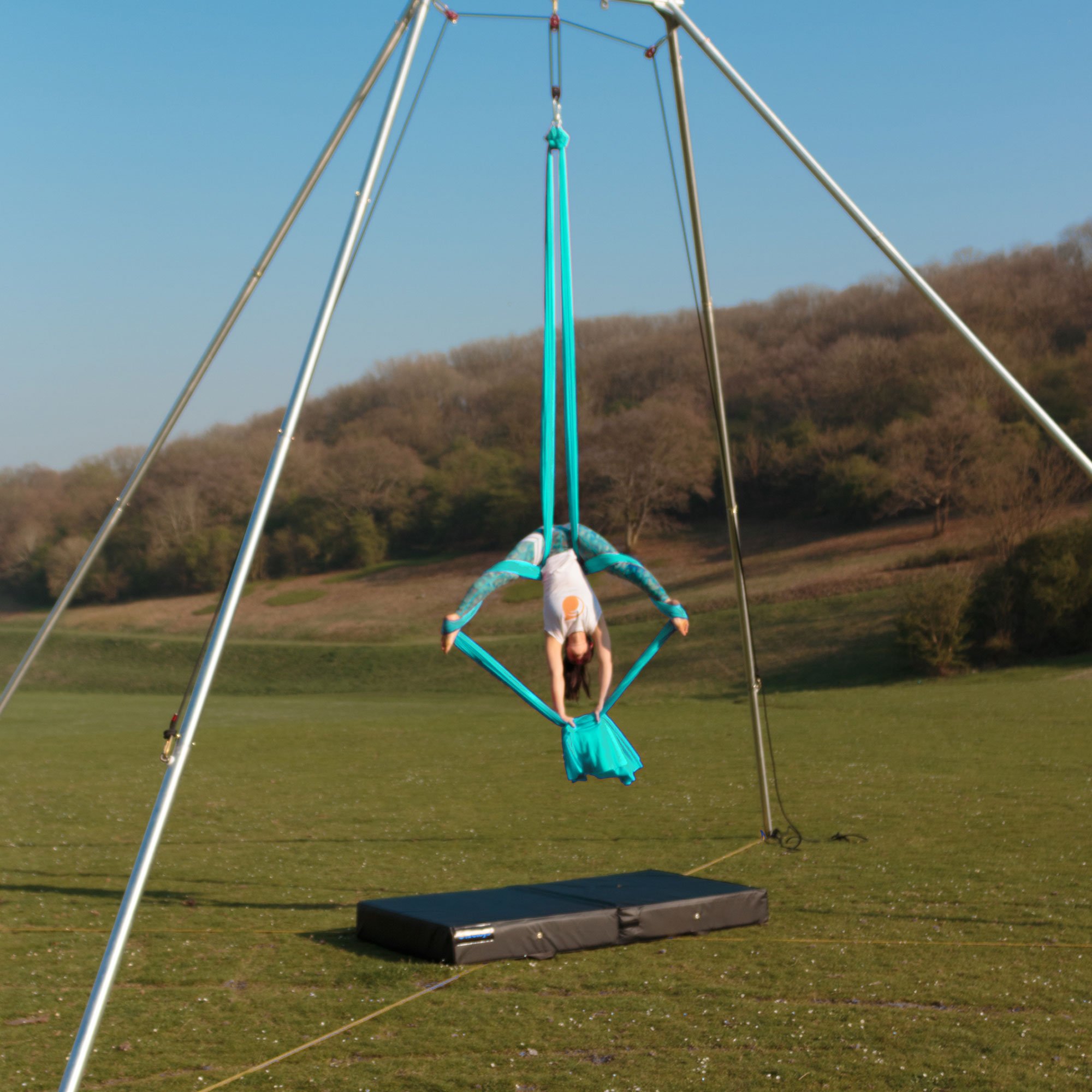
Aerial Safety Precautions

Any rigging points that you use to attach to should be checked and certified by a competent rigger or structural engineer.
Never use any aerial equipment unsupervised! A spotter is always necessary in case you get yourself tangled or fatigued.
Always attend regular classes with qualified professionals before considering home installation, and always check with your instructor first if they think you are ready to begin aerial training at home.
Never forget that any rigging system is only as strong as its weakest part, and in most cases, the only thing keeping you from falling is your own grip.
Whatever you do, don't be tempted to use cheap ceiling hooks which screw into the bottom of a beam. These are not rated for human loads and are not suitable hardware to install for this purpose. Anything that claims to be able to be rigged from a door frame for a human load to invert safely should be approached with caution.
Rigging from trees should be approached with extreme caution as it is much more complex than most people realise. The short answer is don't do it. Branches are not always as strong as they appear, and rough bark can damage your equipment. Even a small person can cause a high dynamic force when training drops or beats with aerial apparatus. Here is more information about rigging from trees, including the problem of a sudden branch drop!
We sell all rigging components separately for your safety and convenience. We want you to have exactly what you need and don't want you to buy something that might not work for you. Most of all we want you to be able to replace it easily when necessary.
Each installation will vary
You will need to buy the correct size or componentry for your needs or personal preferences, this includes the space you have to work in and the size or type of your equipment. Your ceiling might be a different height to your neighbours or friends, or you may be rigging different equipment with different needs- aerial silks won't be rigged in the same way as an aerial yoga hammock or a trapeze.
We aren't riggers
Many members of our team have completed rigging courses and can give general advice about what to buy, but we can't see the space in person and we can't load test the area you want to rig in. Because of this, it would be dangerous for us to provide you with installation equipment and we will always recommend you speak to a professional Rigger or structural engineer. They are specialists and professionals that have spent a lot of time and money getting the right qualifications to help you.
Rigging Equipment
Complete beginners often expect the apparatus they purchase to come with everything they need to install it at home straight from the box. We understand how exciting it is to buy new kit and it's disappointing to find this out when you open the box, but we don't sell it all together for a few reasons, here's a list of the necessary things you will need to buy:
Strop / Spanset - These are looped polyester straps ranging from 50cm to 4m in length and are used to connect your equipment from a carabiner to the anchor point.
Carabiner - Another crucial and commonly used rigging component, this will connect your anchor point to your strop, and you may need more than one depending on what you're planning to practice on at home.
All of the carabiners we sell are suitable for Aerial, but there may be a specific type that is best for you. Please don't buy small and cheap carabiners from hardware stores to use for Aerial rigging, they are not designed for this use.
Figure 8 / Rescue 8 - Commonly used to knot your silks onto. This can then be attached to your anchor point with a connector e.g. a carabiner.
Crash mat / Safety Net - Crash mats or safety nets are crucial to your safety, they absorb a lot of the force when you fall and give you something soft(ish!) to land on.
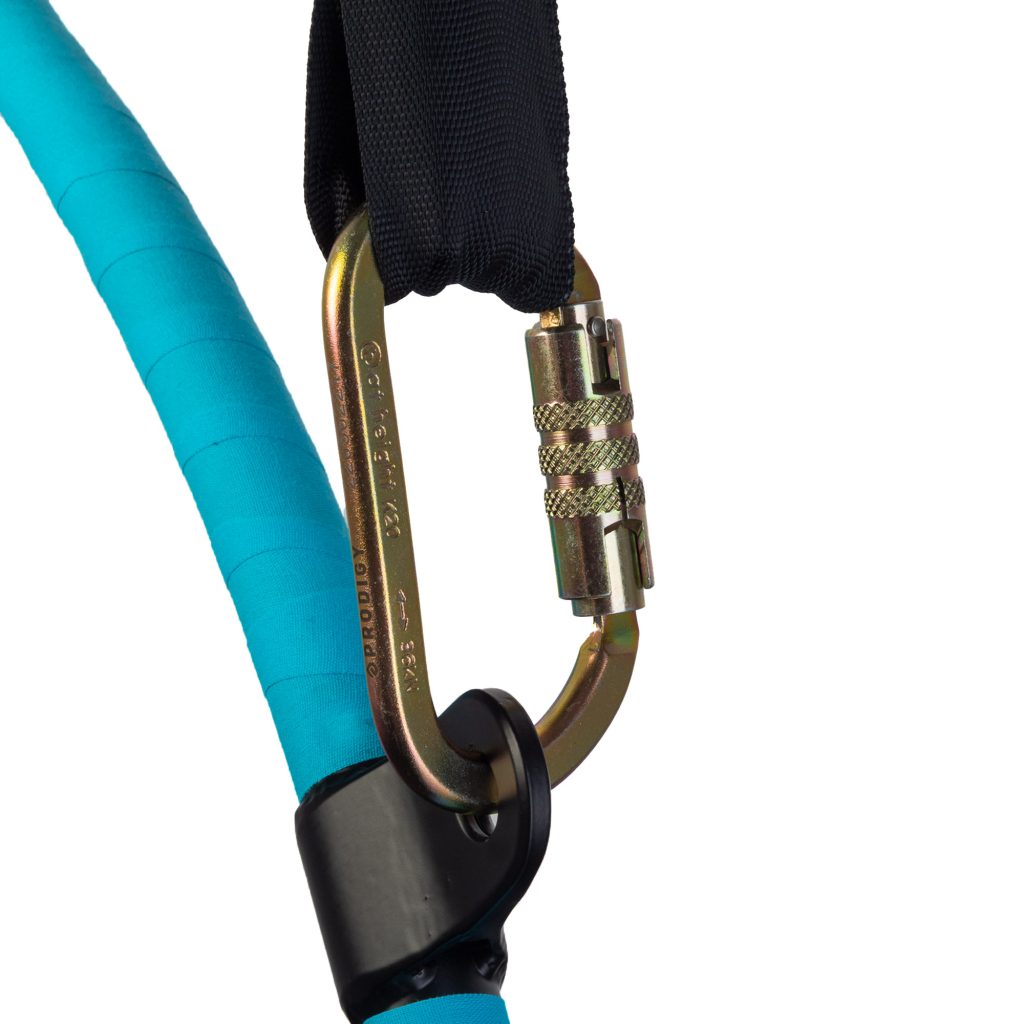
Aerial Rigging Terminology
Anchor Point / Rigging Point - The hooks or brackets your equipment attaches to and hangs down from. This could be a single or double point configuration, depending on your space, requirements or personal preferences.
WLL - Working Load Limit, the amount of weight the apparatus can safely take. This is usually measured in KG
MBS / MBL - Minimum Breaking Strength / Minimum Breaking Load. This is the minimum load the equipment should break at. This is measured in kN. If a piece of equipment is rated to 25kN (approx. 2500 kg) then it could lift that amount, once, and then would need to be retired. In practice, we should never load the equipment to its MBS.
Static Load - The weight of the equipment, plus the weight of the user when not in motion.
Dynamic Force - The weight of the user and the weight of the equipment, plus the force of movement.
FoS / SF - Factor of Safety / Safety Factor, This is the ratio we apply to the BLL we get from our testing to determine the WLL of our equipment. It's important to understand as these compensate for unknown variables during use and installation. It acts as a buffer for dynamic forces and material deviations. For Firetoys equipment, we set the following safety factors depending on the material the apparatus is made from:
- Natural Fibres (cotton) 10:1,
- Synthetic Fibres (nylon/polyester) 7:1,
- Steel 5:1.
- So a BLL of 10kN (1019kg of force) would give a WLL of 101kg for natural fibres, 142kg for synthetic fibres and 204kg for steel.
Rig / Rigging / Rigger - Installation of Aerial Apparatus is known as Rigging, this can be attaching your equipment to a freestanding Rig, or beam or joist. This is specialized work and should only be attempted by qualified professionals, known as Riggers.
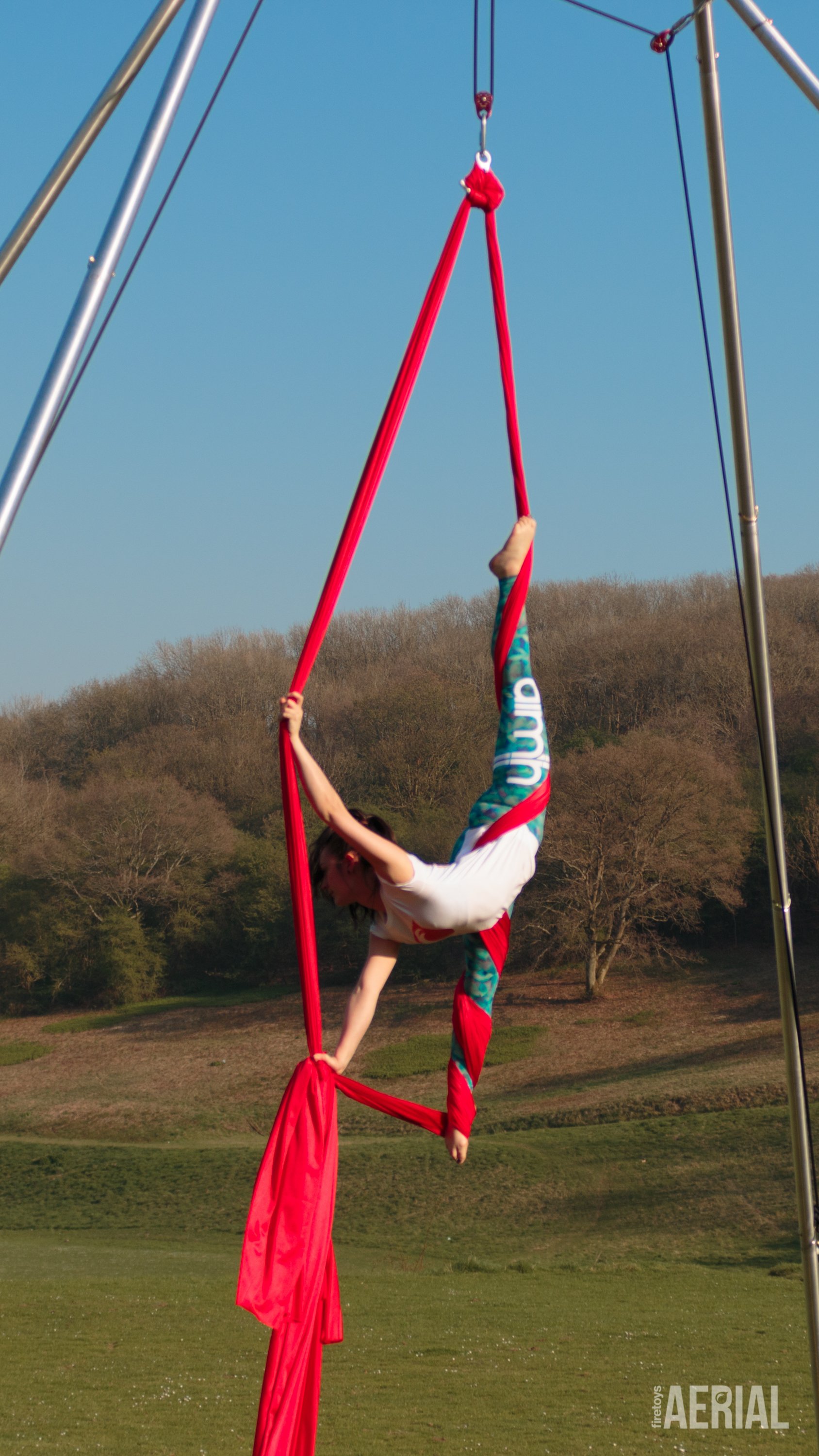
Installing Aerial equipment at home
First, you need to know what load a beam can support, and if the beam is wooden or metal. There are huge differences between these materials and it's important to know what you're dealing with from the very start. The rigging itself should still be done by a qualified professional whether it's from a steel joist or wooden beam. This is something that we wouldn't be able to advise on and would recommend that you speak to a structural engineer to ensure it can support the loads being applied.
With a steel beam, it's easy enough to work out if it is strong enough before calling in riggers. A steel joist has defined and consistent load values which can be looked up online based on the measurements.
With timber, there are lots of variations and these make a massive difference when it comes to rigging. Timber beams can never have a guaranteed WLL or BLL attributed to them as there are natural differences in the material, but a structural engineer can assess a timber beam and report on its usability. A simply supported beam has three zones. At the top, you have the compression zone. This is where the downward force results in pushing in on the beam.
In the middle third, you have the neutral zone where the forces are about equal; the fibres are neither in compression or tension. At the bottom, you have the tension zone, where the downward force causes the beam to pull apart.
The next thing you will need to know is how to attach it to the beam. The best thing to do would be to consult with someone qualified and experienced with rigging for circus to professionally install points for you to attach to that won't take away from the overall strength of the beam. When you stick a screw up into the bottom of the beam, you're screwing into a section of a beam that's pulling away from the screw. Over time, you'll be taking away a significant amount of the tension zone, which will reduce the overall strength of the beam.
Correct hardware drilled through the area between the tension and compression zones of an appropriate wooden beam can work. But several conditions must be met, including resisting twisting or swaying the beam. This is not something that should be undertaken by anyone other than a professional after consulting with a structural engineer.
Remember that rigging aerial at home can be tricky and dangerous if it's not done properly. Please take our advice, do your research, contact the professionals and only use equipment that is designed, tested and certified for aerial. Perform regular checks of all your equipment and replace any damaged items immediately. Above all, have fun but please train safely! (we like repeat customers)
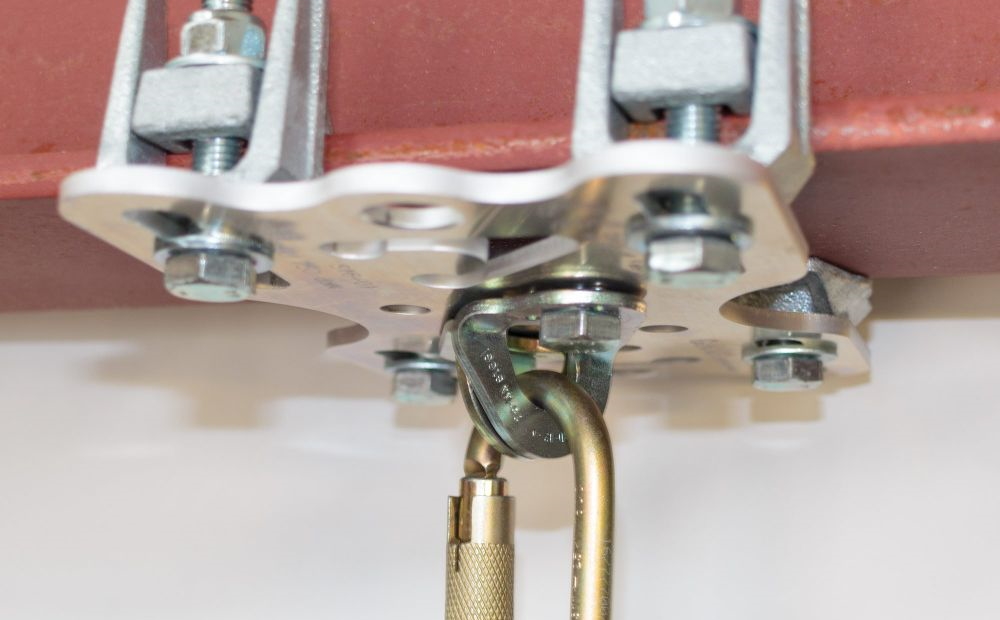
If this is all too much and too expensive to do in your home or flat, or you can't do it because you're renting, you might want to consider our Big Rig or Aerial Yoga Rig.
TLDR; watch the fantastic video below, presented by our friend, Mark Gibson. It says it all and more!
You've read all the information, watched the video, bought the equipment and now you're training at home? Great - here's another fantastically informative video from Mark Gibson.
Further Reading:
http://us8.campaign-archive1.com/?u=96c7661f32cc791fcf6b0a182&id=8d37e9980e&e=60fcf927ae
Part 1 http://us8.campaign-archive1.com/?u=96c7661f32cc791fcf6b0a182&id=7d0ce2cc9b
Part 2 http://us8.campaign-archive1.com/?u=96c7661f32cc791fcf6b0a182&id=14f2f0fc11
Can I rig aerial apparatus from a tree?
How to identify and use the right Daisy Chain.





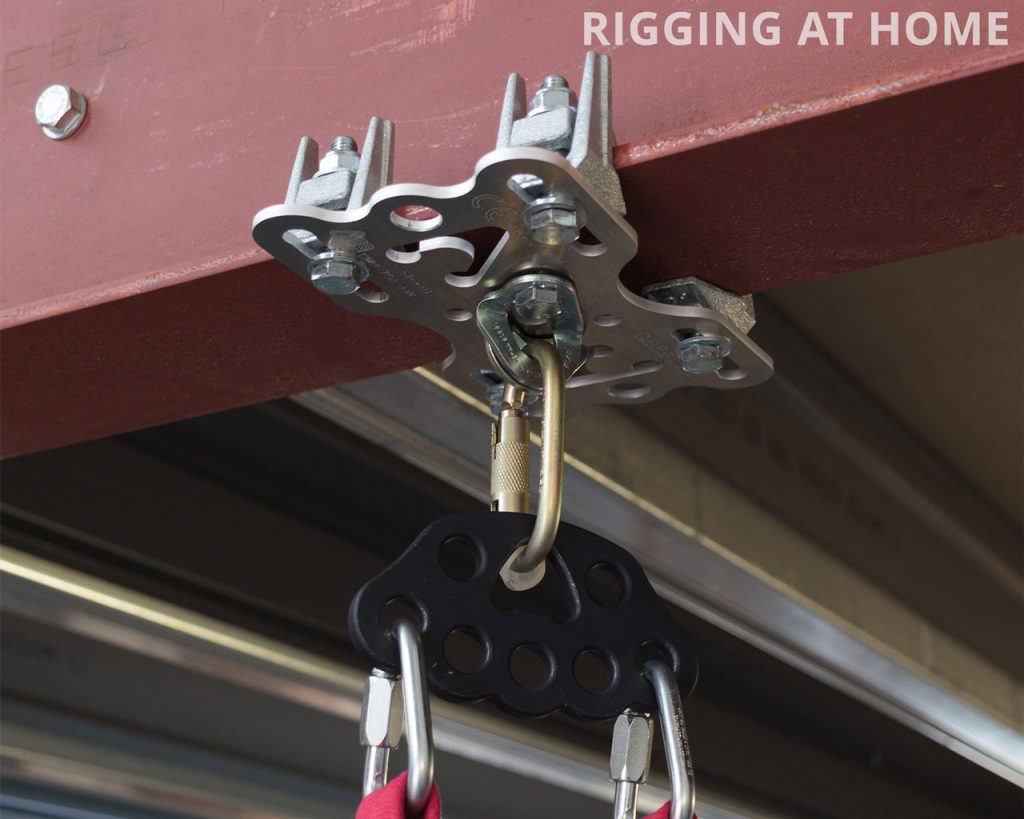
BLL refers to Breaking Load Limit, and is similar to MBS (minimum breaking strain), which is the point at which the equipment actually fails.